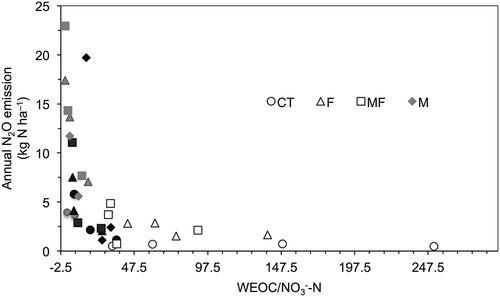Figures & data
Table 1. Timing and kind of field management activities.
Table 2. Manure and chemical fertilizer nitrogen (N) application rates from 2005 to 2015.
Figure 1. Soil nitrate nitrogen (N), ammonium N and water extractable soil organic carbon (WEOC). CT is control plot; F is chemical fertilizer plot; MF is combined chemical fertilizer and manure plot; M is manure only plot. Dashed arrows indicate dates of manure application; solid arrows with open V-shaped tip indicate dates of chemical fertilizer application; solid arrows with round top and normal closed tip indicate dates of plowing.
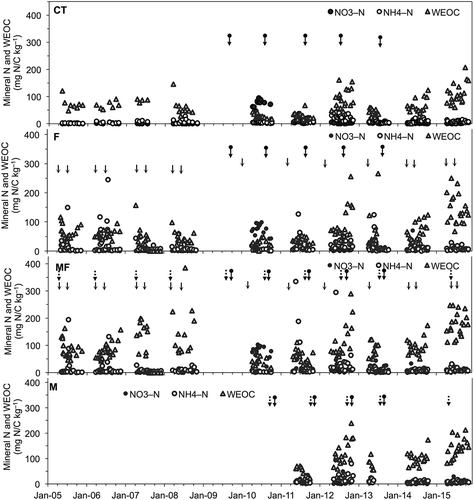
Figure 2. Daily precipitation and air temperature and daily N2O flux. CT is control plot; F is chemical fertilizer plot; MF is combined chemical fertilizer and manure plot; M is manure only plot. Dashed arrows indicate dates of manure application; solid arrows with open V-shaped tip indicate dates of chemical fertilizer application; solid arrows with round top and normal closed tip indicate dates of plowing.
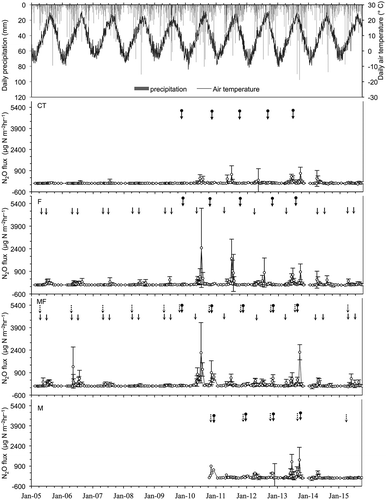
Table 3. Annual nitrous oxide (N2O) emissions (mean ± standard deviation, SD) from 2005 to 2015 in unfertilized control plots (CT), chemical fertilizer plot (F), manure and chemical fertilizer plot (MF) and manure plot (M).
Table 4. Winter nitrous oxide (N2O) emissions (kg N ha−1) and their contribution to total annual emissions in brackets (%).
Table 5. Nitrous oxide (N2O) emissions during the thawing period (kg N ha−1), and their contribution to total annual emissions in parentheses (%).
Figure 3. Daily nitric oxide (NO) flux. CT is control plot; F is chemical fertilizer plot; MF is combined chemical fertilizer and manure plot; M is manure only plot. Dashed arrows indicate dates of manure application; solid arrows with open V-shaped tip indicate dates of chemical fertilizer application; solid arrows with round top and normal closed tip indicate dates of plowing.
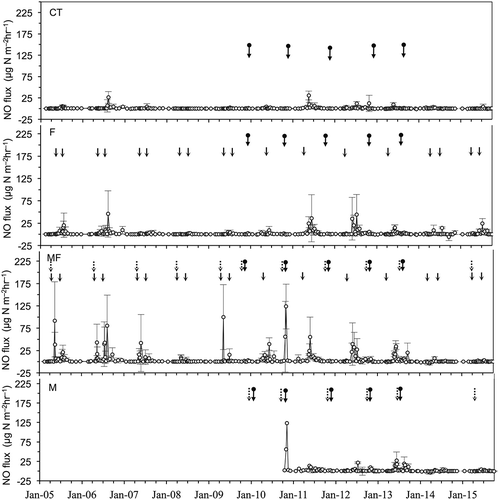
Figure 4. Relationship between annual nitrous oxide (N2O) emission and annual precipitation in (a) old grassland, (b) cornfield and (c) new grassland. CT is control plot; F is chemical fertilizer plot; MF is combined chemical fertilizer and manure plot; M is manure only plot.

Figure 5. Relationship between annual nitrous oxide (N2O) emission and soil pH and ratio of annual nitrogen emitted as N2O (N2O-N) to surplus nitrogen and soil pH in (a, b) old grassland, (c, d) cornfield, and (e, f) new grassland. CT is control plot; F is chemical fertilizer plot; MF is combined chemical fertilizer and manure plot; M is manure only plot.
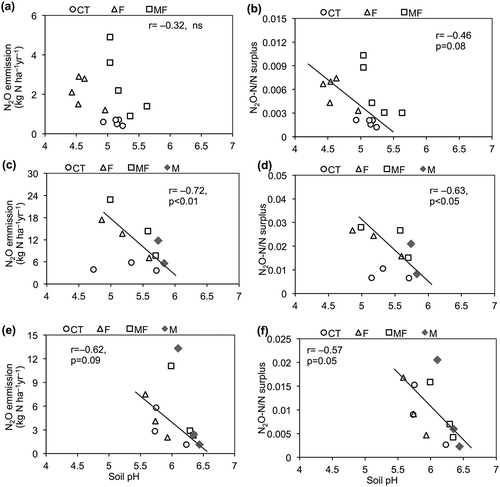
Table 6. Multiple and single linear regression models accounting for change in annual nitrous oxide (N2O) emission with changing land use in the unfertilized control plots (CT), chemical fertilizer plot (F) and manure and chemical fertilizer plot (MF).
Figure 6. Relationship between annual nitrous oxide (N2O) emission and the ratio of mean water extractable organic carbon to mean soil nitrate (WEOC/NO3−). Data in white symbols are in old grassland, gray symbols in cornfield and black symbols in new grassland. CT is control plot; F is chemical fertilizer plot; MF is combined chemical fertilizer and manure plot; M is manure only plot.
